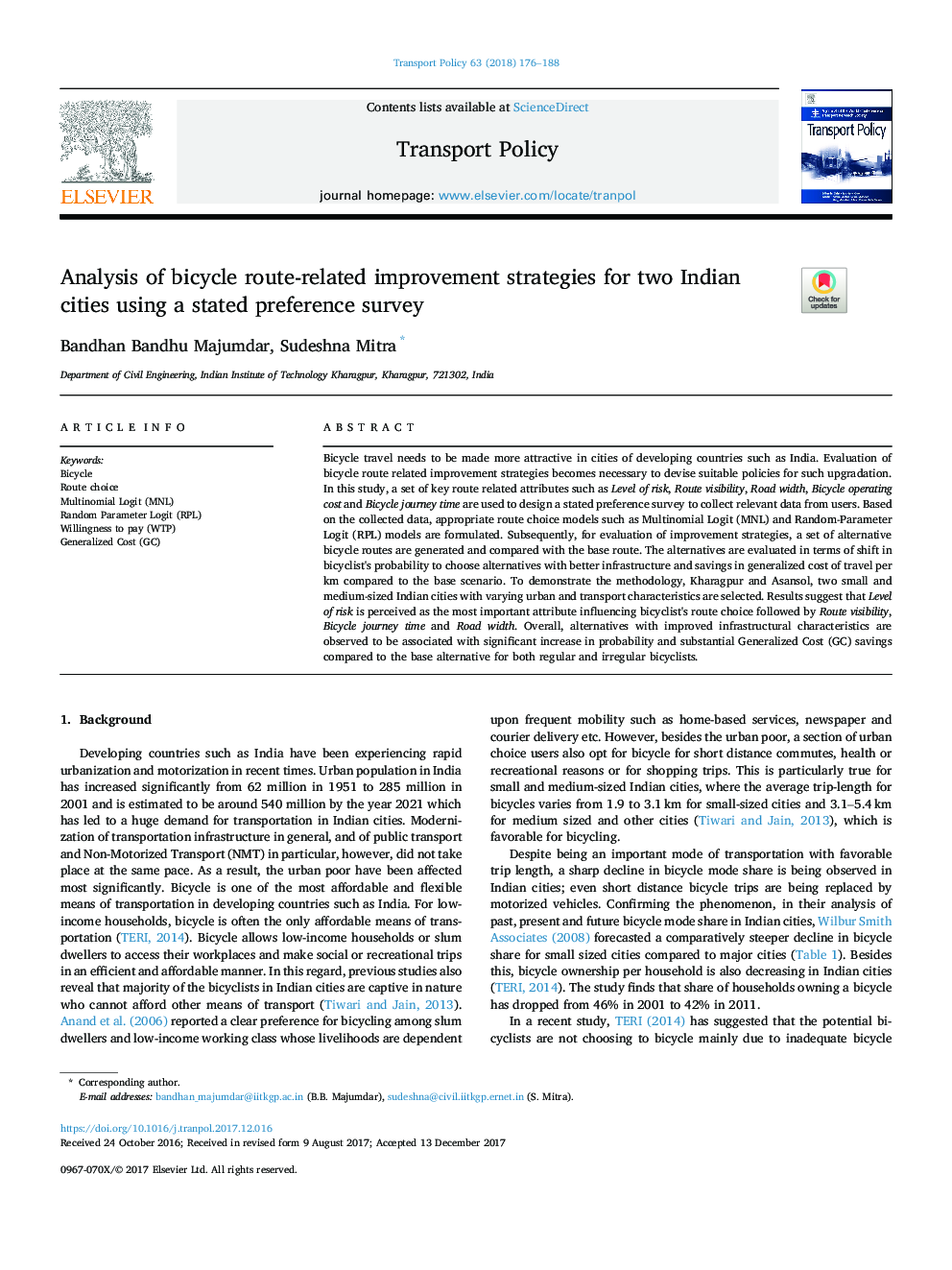| Article ID | Journal | Published Year | Pages | File Type |
|---|---|---|---|---|
| 7497228 | Transport Policy | 2018 | 13 Pages |
Abstract
Bicycle travel needs to be made more attractive in cities of developing countries such as India. Evaluation of bicycle route related improvement strategies becomes necessary to devise suitable policies for such upgradation. In this study, a set of key route related attributes such as Level of risk, Route visibility, Road width, Bicycle operating cost and Bicycle journey time are used to design a stated preference survey to collect relevant data from users. Based on the collected data, appropriate route choice models such as Multinomial Logit (MNL) and Random-Parameter Logit (RPL) models are formulated. Subsequently, for evaluation of improvement strategies, a set of alternative bicycle routes are generated and compared with the base route. The alternatives are evaluated in terms of shift in bicyclist's probability to choose alternatives with better infrastructure and savings in generalized cost of travel per km compared to the base scenario. To demonstrate the methodology, Kharagpur and Asansol, two small and medium-sized Indian cities with varying urban and transport characteristics are selected. Results suggest that Level of risk is perceived as the most important attribute influencing bicyclist's route choice followed by Route visibility, Bicycle journey time and Road width. Overall, alternatives with improved infrastructural characteristics are observed to be associated with significant increase in probability and substantial Generalized Cost (GC) savings compared to the base alternative for both regular and irregular bicyclists.
Related Topics
Social Sciences and Humanities
Social Sciences
Geography, Planning and Development
Authors
Bandhan Bandhu Majumdar, Sudeshna Mitra,
